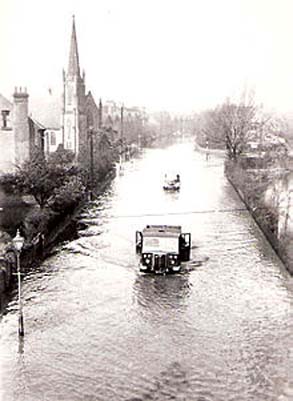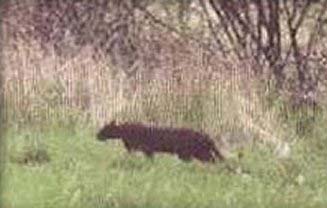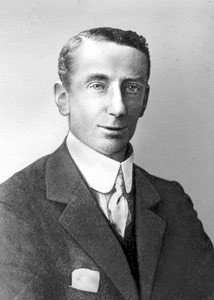In my previous article about the involvement of the High School’s ex-pupils in the newly invented Football League. I spoke in some detail about the career of Arthur Frederick Shaw, who played twice for Notts County in that inaugural season of 1888-1889, before going on to make two more League appearances the following season. He then continued his career in the Second Division with firstly Nottingham Forest and then Loughborough. Here is the Notts County kit that he would have worn during that first season:

When Arthur Shaw made his first appearance in the Football League on December 8th 1888, at home to Aston Villa, a narrow 2-4 defeat for the Magpies in front of 2,000 spectators, he was the inside right (No 8). In the same team, playing at left full back (No 3) was the splendidly named Herbert Durrant Snook, a fellow ex-pupil of the High School.
Born on December 23rd 1867, Herbert Snook entered the High School on September 11th 1876. He left at Christmas in 1882. Herbert was one of four brothers, the sons of James Snook, a wholesale merchant and draper. The family lived initially in Elm Avenue, Nottingham, before their fortunes improved dramatically and they moved to Penrhyn House, in Clumber Road, The Park, Nottingham:

The other three Snooks at the High School were James Brasher Snook, Frederick William Snook and Percy Walter Snook. All three played for Notts County in various F.A.Cup ties and friendlies, but never in the Football League.
In that first season of League Football, Herbert also played in three F.A.Cup ties. These were all home games, against Eckington (4-1), Beeston St.John’s (4-2) and Derby Midland (2-1). Herbert played as a right full back (No 2) against Beeston St.John’s, but as a left full back in the two other games. The Cup Ties against Eckington and Beeston St.John’s were both contested by Notts County’s reserve side. On the same day, the First Team played Football League fixtures against Blackburn Rovers (3-3, 4,000 spectators) and Burnley (6-1, 5,000 spectators), both games taking place immediately after the Cup games. The crowd against Beeston St.John’s and Burnley must have gone home happy. It isn’t often that County win two successive games and score ten goals doing it. Here is Notts County’s Meadow Lane. It is the football stadium in the top right. Nottingham Forest’s City Ground is towards the bottom of the picture, on the southern side of the River Trent:

Herbert’s brother, Frederick William, played against Eckington and Beeston St.John’s, at centre forward (No 9) in the first game, and as inside right ((No 8) in the second. A third Old Nottinghamian to play was Henry Harold Brown who was at the High School from 1874-1878. He appeared as outside left (No 11) in both games and scored a brace of goals against Beeston St.John’s. His brother, Gilbert Noel Brown, yet another ex-pupil of the High School, played as centre forward (No 9) in this game.
In 1890, Herbert Snook was one of the earliest shareholders in the newly formed “Notts Incorporated Football Club”, although during the 1888-1889 season he had played in two friendlies for Nottingham Forest, the first against Stoke City (1-2), the annual Shrove Tuesday match. Here is the Stoke City kit:

The second game was against his old team, Notts County (2-5). In excess of 5,000 spectators watched the match. On March 12th 1891, Herbert appeared for the Old Boys in their 3-1 victory over the High School First XI at the Gregory Ground, the home of both the High School footballers and of Nottingham Forest.
Herbert was to spend most of his life living at “The Cedars”, Derby Road, Lenton, Nottingham. He was keen on tennis, and in partnership with Gilbert Noel Brown, held the county men’s doubles championship for many years. Herbert was well known in political circles as a liberal, and worked in the old established family business of James Snook and Company Ltd., who were wholesalers and clothing manufacturers in Houndsgate, Nottingham. In actual fact, Herbert was still working until well into his eightieth year, after forty years as chairman and managing director, and a grand total of sixty two years in the company. Immediately after Herbert’s retirement, the business was taken over by a Birmingham firm. Herbert died on October 13th 1947, at the age of seventy nine, after an illness lasting some months. He was buried in the family vault in the Church Cemetery on Mansfield Road. Here is the Church Cemetery, a Victorian masterpiece. It has a permanent staff of eight vampires:

Playing at right half (No 4) on December 8th 1888, against Aston Villa, alongside Arthur Shaw and Herbert Snook, was a third ex-High School pupil, namely G.H.Brown. Strangely, there are two likely candidates of this name in the Victorian school registers at the High School.
The first possibility is George Henry Brown, the son of Samuel Brown, a fish and game dealer of 96, Sherwood Street, Nottingham. He would have been nineteen years of age when the match against Aston Villa took place. A better fit though, would be George Hutchinson Brown, the twenty one year old son of George Wilkinson Brown, a grocer and chandler of firstly 14, Colville Terrace, and then 62, Addison Street, Nottingham. We will probably never know the answer to this enigma, unless Notts County have a dusty box full of players’ contracts from this era, hidden away somewhere, perhaps among the cobwebs of their trophy room.
George Hutchinson Brown was to wear his admittedly un-numbered shirt as a right half (No 4) for most of that historic first season. He played 19 times out of a possible 22 games. He had the honour of playing in County’s first ever League game, a 1-2 defeat away to Everton at Goodison Park, and also in their first ever home game, a 3-3 draw with Blackburn Rovers. Here is the Blackburn Rovers’ strip, very similar to the present day:

Notts County’s first ever league victory came in their fifth game of the season, and was a 3-1 home win over Everton. George Hutchinson Brown was again the team’s right half. Here is the Everton kit:

George also played in County’s first ever away win in the League. This was a long, long, wait, until Match 18 out of 22, a 2-1 win over Accrington on January 26th 1889, County’s only victory away from home in the whole season. Here are the Accrington colours:

George Brown’s solitary goal came in a narrow 2-5 away defeat against Blackburn Rovers at Ewood Park, in front of 4,000 spectators, on December 15th 1888. One particularly exciting game must have been the last one of the season, another narrow defeat at home, this time by 3-5 against Derby County. The Rams wore this unusual kit:

George had played in friendlies for County in both the 1886-1887 and the 1887-1888 seasons. He made 28 appearances and scored one goal, against the Sheffield Club. Interesting results came against Scottish club, Hibernian (0-6), Aston Villa (8-2), Corinthians (1-4), Nottingham Forest (0-0, 12 000 spectators) and the disastrous Notts Rangers match (0-8). Here are the Hibernian colours of the era:

George played in five F.A.Cup ties for County, against Nottingham Forest (1-2), playing as a centre half (No 5), Derby Midland (2-1), Old Brightonians (2-0), and Sheffield Wednesday (2-3). Best of all, he played as a left full back (No 3) in the El Classico of the Victorian era, Notts County 13 Basford Rovers 0. Here is Meadow Lane from the spectators’ point of view, seconds after the end of the game:

At the end of the 1888-1889 season George left County for ever, and moved to Forest, where he was to play seven games in the Football Alliance, and a number of friendlies. Interesting results included games against Bootle (2-2), Grimsby Town (0-4), Long Eaton Rangers (3-5). Clapton (0-1), Walsall Town Swifts (0-1) and Everton (0-7).
A fourth Old Nottinghamian to play in County’s first season in the Football League was Harry Jackson, who was born on April 23rd 1864. His father, Charles J.Jackson, managed what the School Register rather grandly listed as a “Piscatorial Dépôt”, (probably a fishmongers, or even a fish and chip shop) and the family lived at 23, Carrington Street. Harry played on five occasions; as an outside left at Stoke (0-3), as a centre forward at Burnley (0-1) and Wolverhampton Wanderers (1-2, 1 goal), an inside left at Bolton Wanderers, (3-7, 1 goal), and an inside right at home to Derby County (3-5).
Here is the Burnley kit;

And here is the Wolverhampton Wanderers’ strip:

Here are the Bolton Wanderers’ colours. Very little has changed here:

In his career with County, Harry also played in 21 F.A.Cup ties, and scored 19 goals. In other games for County, all of which would have been friendlies, he made 101 appearances, and scored 85 goals. This gave Harry Jackson an overall career total of 104 goals in 122 games for Notts County, both totals and a strike rate which are only exceeded by those of Harry Cursham himself:

A fifth Old Nottinghamian in that same inaugural season of 1888-1889 was Edwin Silvester Wardle. Edwin was born on January 11th 1870 and the family lived at Magdala House in Mapperley Road. He attended the High School from 1881-1883. He made two appearances in the League for County, the first as an outside left (No 11) at Goodison Park, Everton, in the very first match of the season (1-2), County’s début in the Football League. Strangely, he then appeared as an outside right in the very last fixture of the campaign, the 3-5 home defeat to Derby County. Prior to this, he had played in six friendlies, scoring three goals, two against Aston Villa (3-3) and one against Halliwell (1-4). He also appeared in four F.A.Cup ties, scoring one goal against Staveley (3-1).
Another particularly disappointed Old Nottinghamian, the sixth to play in that first season of 1888-1889, must have been John Alfred Brown, who made just one appearance for County, as an outside left (No 11) in a game at Villa Park against Aston Villa. County lost narrowly by nine goals to one, watched by an entranced crowd of some 4,000 spectators.
John Alfred Brown was born on March 20th 1866. Along with his elder brother, he entered the High School on August 10th 1874, at the age of eight, although the date when he left the High School remains unknown. He made his first appearances for County towards the end of the 1883-1884 season, when, after the New Year, he played as an inside left in away friendly games at Walsall Swifts (1-2), and Sheffield Attercliffe (0-2). Overall, he played in 34 friendlies between 1884-1888 and he scored a healthy total of 14 goals. Interesting games and scores in 1884-1885 included his two goals in a 5-0 defeat of Wednesbury Old Athletic, and another goal against Hendon in an 8-2 victory. There were also games against Blackburn Olympic (1-1 and 0-3), Preston North End (1-2), Sheffield Wednesday (1-0), the Sheffield Club (3-0), Blackburn Rovers (0-2), Notts Rangers (2-1) and Derby County (0-2). Here are the Blackburn Olympic colours:

For the most part, John was an outside left, although he also played at inside left, and inside right. In 1885-1886, he appeared in home games against Bolton Wanderers (3-3) and Great Lever (1-3), and in away games against Queen’s Park (1-5), the Sheffield Club (6-1) and Wellingborough Grammar School (8-3). He scored a goal at Sheffield, although three of the scorers at Wellingborough remain unknown. Two games were at inside left, with one at outside left, and two at centre forward. The following season of 1886-1887, he played at the Sheffield Club (4-1) and Wolverhampton Wanderers (0-2). He also appeared against Preston North End, a game which County were narrow losers by 0-14. Here is the Preston strip:

John’s most successful season was 1887-1888 with 10 goals in 14 appearances. These included Walsall Town (0-4), West Bromwich Albion (1-5), Nottingham Forest (1-0), Preston North End (2-5), Everton (1-3). He played in home fixtures against Leek (8-1), Aston Villa (8-2), Preston North End (2-3), Grimsby Town (4-0), and Corinthians (1-4). A substantial veil might be drawn over Mitchell St.George’s (0-10).
John scored four times against Leek and Aston Villa, with single goals in each game against Preston North End. All of his games were as an inside left.
By the way, the illustrations of old football kits came from the best ever website for the soccer nerd and all the boys who had more than twenty different Subbuteo teams. New Brighton Tower 1898? Oh, yes.






























































































